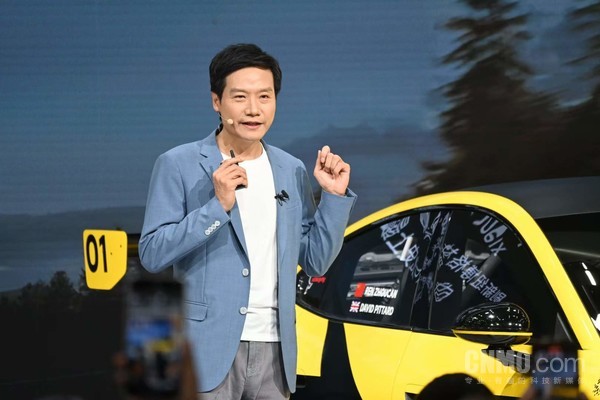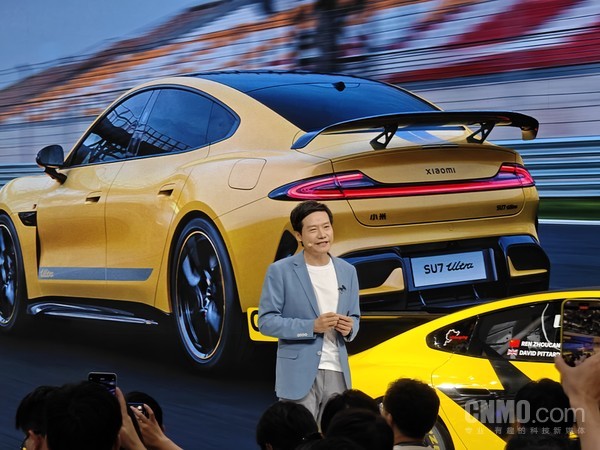[CNMO Technology]The 2024 Guangzhou Auto Show was officially held from November 15th to 24th. 78 world premiere models were unveiled, including 6 first launch vehicles from multinational companies. The total number of vehicles on display reached 1,171, including 512 new energy vehicles. Not only will mainstream international car brands such as BMW, Mercedes-Benz, Volkswagen, and Audi make a concentrated appearance, but domestic car groups and brands will also participate in the exhibition on a large scale with a full range of products. New energy vehicle brands such as NIO, Xpeng, Ideal, Xiaomi, and Hongmeng Zhixing will also participate in the exhibition. Competing on the same field.
Currently, new energy vehicle companies are like “catfish”, intensifying competition in the entire automotive industry. Traditional mainstream car brands are a bit overwhelmed, and luxury car brands are also forced to engage in price wars. For the former “big brothers” of automobiles, it is imperative to accelerate the shift to new energy vehicles.
As a feast for car enthusiasts and industry experts, the 2024 Guangzhou Auto Show brings together the latest technologies and design concepts of major brands, and it is also the time of year for all car companies to “hand in their homework”. As a link between the past and the future, the trends of the automotive industry in 2025 are also looming.
This time, Passionategeekz Technology planned the special topic “Guangdong’s Visit to the Guangzhou Auto Show”, aiming to cover the auto show as comprehensively as possible and deliver more information. The theme of this article is “New and Old Faces of the Guangzhou Auto Show”.
The brand headed by Xiaomi made its debut at the Guangzhou Auto Show for the first time, which should not be underestimated. In addition to Xiaomi, Ledo Automobile, 212, Jishi Automobile, and LEVC Yizhen Automobile all participated in the Guangzhou Auto Show for the first time. Among them are cutting-edge brands like Xiaomi and century-old car companies like LEVC. It seems that the new competition has stirred up quite a storm, and even the “indifferent” predecessors such as LEVC Yizhen Automobile and 212 can’t help but want to get closer to the center of the storm.
New faces at Guangzhou Auto Show
Recently, the Xiaomi SU7 Ultra prototype ran an astonishing time of 6 minutes, 46 seconds and 874 seconds on the Nürburgring circuit, winning the title of “The World’s Fastest Four-Door Car”. The mass-produced version of the car has been unveiled at the Guangzhou Auto Show, and with Lei Jun’s traffic blessing, this car has attracted much attention and can be said to be responsible for traffic.
Letao Auto is a sub-brand of NIO. Currently, it only has one L60 model, which is positioned for home use. Compared with Weilai, the price of L60 is more affordable. Backed by NIO’s strong support, Letao already has the potential to become a hit.
The 212 brand has a history of nearly 60 years and is a classic representative of Chinese off-road vehicles. It carries the memories of generations of Chinese people. Its classic appearance design and powerful off-road performance make it a legend in the Chinese off-road vehicle market.
Jishi Automobile is a new face in the field of new energy vehicles and made its debut at the Guangzhou Auto Show. This brand jointly created by Luoke Intelligent, Weiqiao Entrepreneurship Group, and BAIC Manufacturing has strong background support. However, the SUV market is already very crowded, with models such as the BYD Formula Leopard 5 and Tank family being strong competitors. It is not easy for Jishi 01 to stand out in such an environment.
LEVC was founded in 1908 and focuses on building British-style cars. After being fully acquired by Geely in 2013, there has not been much action. This time, Yizhen L380 was unveiled at the Guangzhou Auto Show as the first model after the acquisition. This pure electric MPV is an important step for Geely to increase its market share in the MPV market.
Geely hopes to increase the visibility of the L380 through this auto show and promote its sales. At the same time, through the mutual cooperation of Jikrypton 009 and L380, Geely’s position in the MPV market will be further consolidated.
In addition, Hongmeng Zhixing’s million-dollar luxury car brand Zunjie also appeared at the Guangzhou Auto Show for the first time, but no model has been announced yet.
Why don’t the old and powerful teams come?
Compared with previous years, more brands are absent this year, such as Genesis, Jaguar Land Rover, Subaru, Jetta, Chevrolet, Hechuang Automobile, Polestar, Yuanhang Automobile, Dayun New Energy, Venucia Automobile, and Blue Electric Automobile. , Rolls-Royce and Messar were all missing. Without so many brands, the excitement of the auto show will naturally be compromised. Everyone began to speculate, what is the reason why these brands chose to be absent?
In fact, although auto shows can showcase new cars, for some brands, selling cars directly may be more important. For example, some brands feel that the Chengdu Auto Show is more sales-focused, so they are more willing to go there. In contrast, the Guangzhou Auto Show neither emphasizes the release of new technologies and new products like the Beijing or Shanghai Auto Show, nor does it focus on sales like the Chengdu Auto Show. Its positioning is somewhat awkward, leaving some brands hesitant.
Take Jaguar Land Rover as an example. According to internal sources, there are two reasons for their absence: first, they are making brand adjustments; second, they feel that participating in the auto show will not help sales much. In the future, Jaguar Land Rover may turn more to online promotion, which reflects the changing attitude of some car companies towards traditional auto shows.
In fact, not only the Guangzhou Auto Show, but also large-scale auto shows around the world are in decline. For example, the Geneva Motor Show has been suspended, the Frankfurt and Detroit Motor Shows have moved locations, and the Tokyo Motor Show has also changed its name. Behind these changes, some are due to the sluggish local automobile industry, and some are due to the decrease in car buyers.
In addition, due to high economic pressure, some car companies feel that the cost of participating in the exhibition is too high, or that participating in the exhibition cannot bring significant sales growth, so they choose not to participate. For high-end brands like Rolls-Royce, it makes little sense to participate in auto shows due to their smaller target customer base.
There are also some car companies that have adopted strategic participation in the exhibition, allowing only those brands with good sales performance to optimize the use of resources. This way, less popular brands don’t have a chance to show up.
In short, the absence of 13 brands from the Guangzhou Auto Show is not an accident. It is the result of multiple factors such as market changes and brand strategy adjustments. Faced with these challenges, future auto shows will need to find new ways to engage audiences and brands in order to continue to play a role in the automotive industry.
The new landscape is being reshaped
Brand restructuring has become a common trend in the industry, and this practice is also encouraged in China. On November 6, Xiong Jijun, Vice Minister of the Ministry of Industry and Information Technology, stated that the Ministry of Industry and Information Technology will optimize the development environment, encourage outstanding new energy vehicle companies to strengthen themselves through mergers and reorganizations, and increase the concentration of the entire industry.
Looking at Europe and the United States, there are only a dozen mainstream car companies in total, while the number of domestic car brands is much larger. In the next few years, mergers, acquisitions, and reorganizations will be the norm. Therefore, no one can guarantee that the brands that have great fame or eclipse at this Guangzhou Auto Show will be in the same position next time.
A year ago, the news that Xpeng was joining forces with Volkswagen made many people sigh: It is finally the turn of foreign companies to join a joint venture with Chinese car companies. This year, what we see is frequent mergers and reorganizations among independent brands.
In the past two months, at least five mergers or reorganizations have occurred in the domestic new energy vehicle industry. In addition to the mergers of Geely Geometry and Galaxy, Jike and Lynk & Co, and FAW Feifei and Roewe, there is also news that Audi and FAW are cooperating to launch the “AUDI” brand. Recently, “LatePost” also broke the news that Geely Galaxy and Yizhen brands are also going to merge.
In the past few years, the new energy vehicle market was booming, and the multi-brand strategy was like “having more children, multiple outlets.” But now, with the bankruptcy of Gaohe Automobile and the suspension of production of Nezha Automobile, market competition has become increasingly fierce, and the problems caused by multiple brands have become more and more obvious. At this time, car companies realized that it was time to “concentrate their efforts on big things.”
On November 14, during the earnings call, Jikrypton CEO An Conghui talked about the reasons for the merger between Jikrypton and Lynk & Co. He said that although the two brands have different positionings, their price ranges overlap. If they are not merged, internal competition will be serious, management conflicts will occur, and they will be criticized by the outside world. In addition, the two brands have a lot of overlap in R&D and sales, and merging can avoid wasting resources.
An Conghui pointed out that mergers have many benefits, such as reducing internal competition, brands can complement each other, unify product structures, share sales channels, and enjoy the advantages of economies of scale.
Geely also announced in an announcement on the same day that it has reorganized the positioning of each sub-brand: Ji Krypton focuses on high-end luxury, Lynk & Co is positioned as mid-to-high-end, and Geely Galaxy and China Star are aimed at the mainstream market. Each brand has its own characteristics and characteristics. product line.
Whether it is an independent or joint venture brand, if you want to gain a firm foothold in the market or avoid being swallowed up by others, you must go all out. Today’s competition is really about retreating if you don’t advance.
All rights reserved. No reproduction without permission.
#Guangzhou #Auto #Show #reshuffle #Xiaomi #Letao #participated #exhibition #time #established #powerhouse #absent #Mobile #China
















